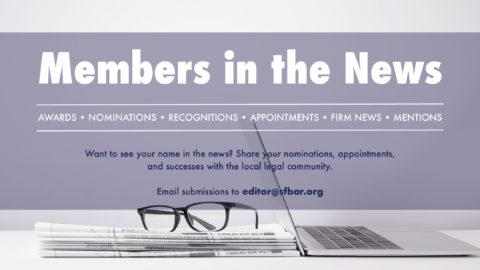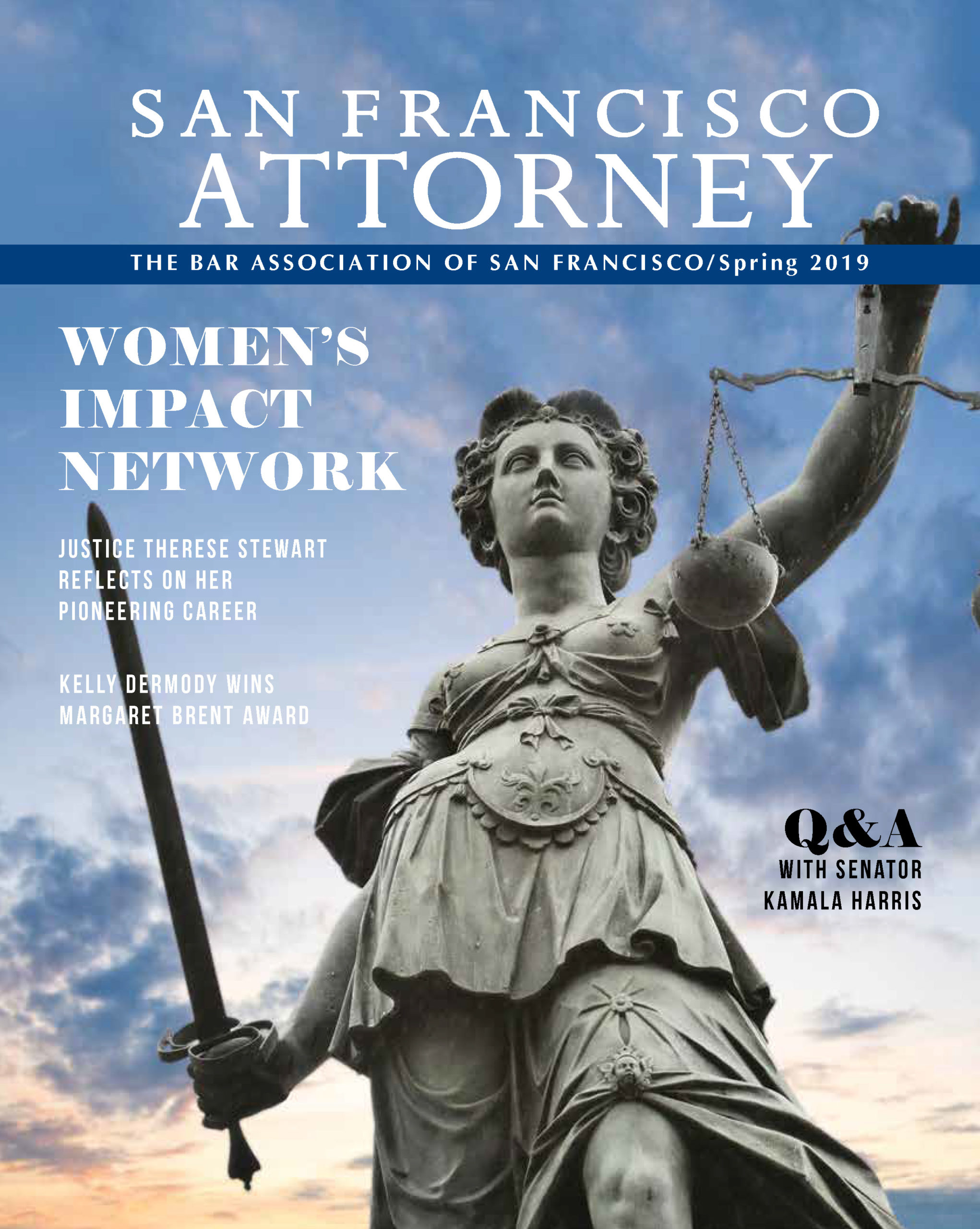
On November 29, 2018, Bar Association of San Francisco members gathered to launch the revitalized Women’s Impact Network: No Glass Ceiling 2.0 (WIN) with its inaugural conference, Step In, Step Together, Step Up: Reshaping the Culture for the Modern Professional Woman. It was an historic occasion. Standing on the foundation built by their predecessors, the current generation’s leaders shared their calls to action and commitment to continuing efforts to achieve gender equality in the legal profession.
In three sessions, panelists introduced and discussed the steps the WIN Steering Committee identified as imperative to achieve its goals. In the first panel, “Step In—How We Got Here,” members of the original No Glass Ceiling Task Force shared candid anecdotes depicting the culture of the legal profession two decades ago. The panelists provided the historical context for the original initiative, acknowledged positive changes they have experienced, and discussed the important work that remains to be done.
During the second panel, “Step Together—How to Have the Hard Conversations,” former U.S. Attorney Melinda Haag led a very frank discussion with six male leaders in the profession. The panel provided refreshingly introspective and honest views on gender disparity, shared real-life examples they had witnessed in the professional realm, and discussed effective ways to engage all genders in this dialogue to reshape the culture.
Finally, “Step Up—Engaging in the Culture Shift” addressed the need for changes in deeply ingrained institutional practices. The session highlighted women in technology, finance, nonprofit organizations, and the law who had successfully put their own bold leadership imprint on their organizations.
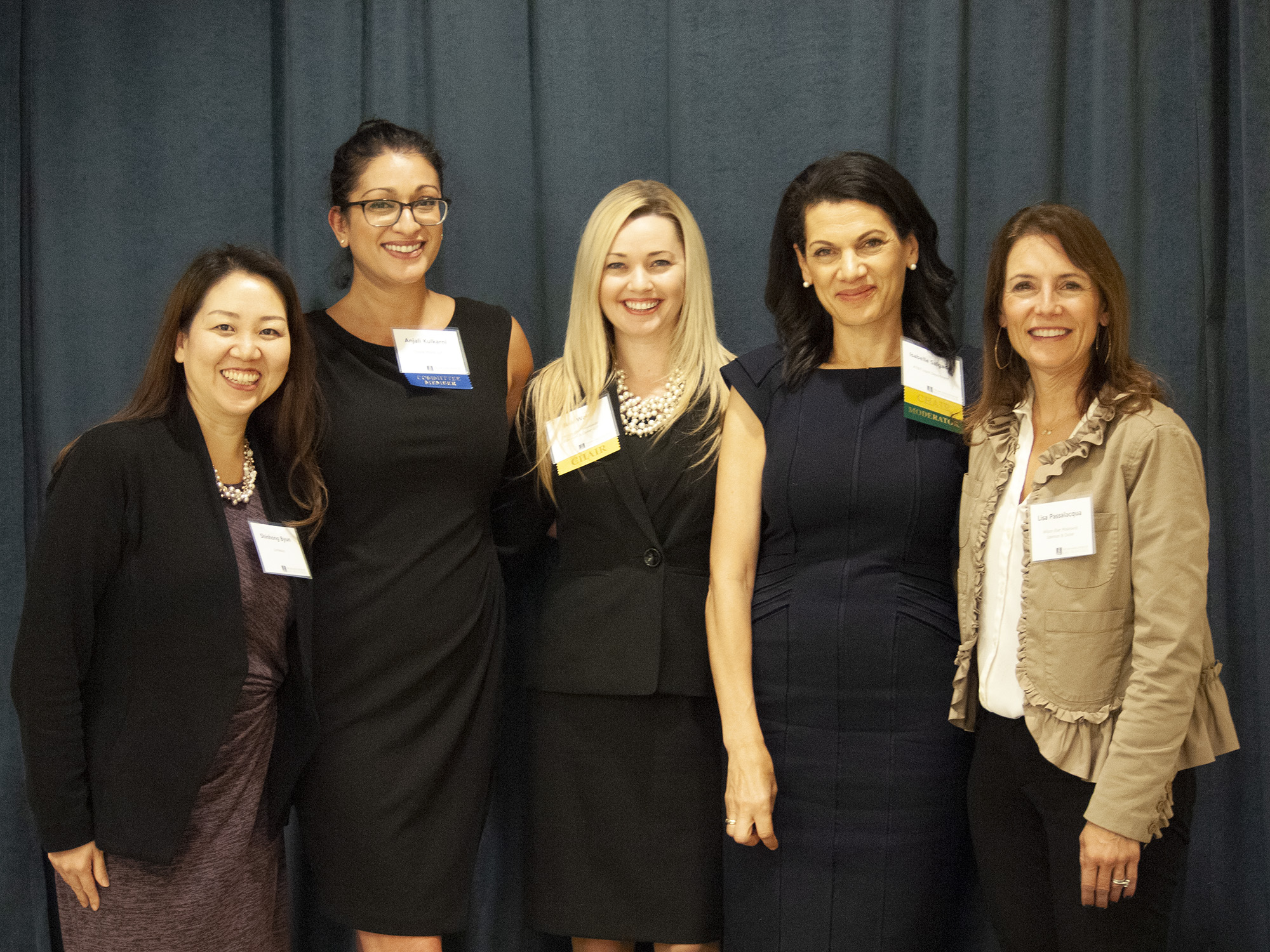
Part of what made this conference different was the focus on impact, says Isabelle Salgado, who along with Blair Walsh co-chairs the current WIN Committee. “A lot of conferences talk about what was imposed on women,” she says, but the questions the current WIN task force are asking are more about the impacts women have on organizations. “We’re lifting the conversation,” she says, noting she’s witnessed “when leadership is diverse, and when there are more voices, outcomes improve for everyone.”
The WIN committee has the statistics to back this up, and its members are making plans for lifting the legal profession in the Bay Area—as well as across the country—to a new level of equality. One important point is that this is not all about and for women, for men are actively engaged. Everyone across the gender spectrum benefits when inclusion is the norm.
“It was such an inspiring, energetic day,” says Charlene “Chuck” Shimada, who was a founding member of BASF’s original No Glass Ceiling Task Force and spoke on the first panel. But there is much work to be done. Attendees were reminded, “Today is just the beginning.”
Recalling the Achievements of No Glass Ceiling 1.0
“We have always had a women’s committee,” says Yolanda Jackson, Executive Director of BASF and the Justice & Diversity Center (JDC), but in 2001, some forwarding-thinking women and men saw opportunities to be catalysts for change. At the helm of a group that included highly respected judges, academics, and lawyers from a variety of practices were three women pioneers: Shimada, who was the first female litigation partner, as well as the first woman of color partner, at McCutchen, Doyle, Brown & Enersen; now-San Francisco Superior Court Judge Angela Bradstreet, who, as BASF’s president at the time, founded the task force; and Mary Cranston, a national firmwide managing partner at Pillsbury Madison & Sutro, “literally the only woman chair of a law firm,” says Bradstreet.
“When I look back at what the world looked like”, says Shimada, ”we were invisible.” In 2000, 15 percent of partners in law firms were women, fewer than 5 percent were in management positions, and fewer than 1 percent of partners were women of color. The committee created an initiative asking Bay Area law firms and legal departments to commit to increasing the percentage of women in leadership roles. “We asked signatory firms to commit to three goals: at least 25 percent women partners, at least 25 percent women in management in three years, and at least one woman managing firmwide or a branch partner,” says Bradstreet. “We publicized where the legal profession was and where we wanted it to be in very concrete terms,” says Shimada. “What made it unique,” says Bradstreet, “is that we had specific metrics that could be measured. We had a timetable. We had monitoring and support.”
“Some people thought it was too aggressive,” Bradstreet says, “but in a 2005 survey, an overwhelming majority reported success.” And that inspired the next generation of task force leaders to increase those targets. There was some discussion about how this might be tokenism, or simply meeting a quota, but it was not a supply issue, for the talent existed. In 2010, to better prepare women for leadership positions, co-chairs Patricia Gillette and Erin McLeod re-energized the task force and designed conferences to provide skill-building training.
Seeking equality for women in leadership is the right thing under the law, says Bradstreet, and it is also smart. “It’s a business issue, not a women’s issue,” she says, and she refers to studies by Catalyst, a nonprofit founded in 1962 that endeavors “to build workplaces that work for women,” that have determined “companies with a higher representation of women in senior management positions financially outperform companies with proportionally fewer women at the top.” Their findings, they state, prove “companies that recruit, retain, and advance women will have a competitive advantage in the global marketplace.” Furthermore, says Jackson, “You’ll see retention if women believe they have opportunities and people to back them up.”
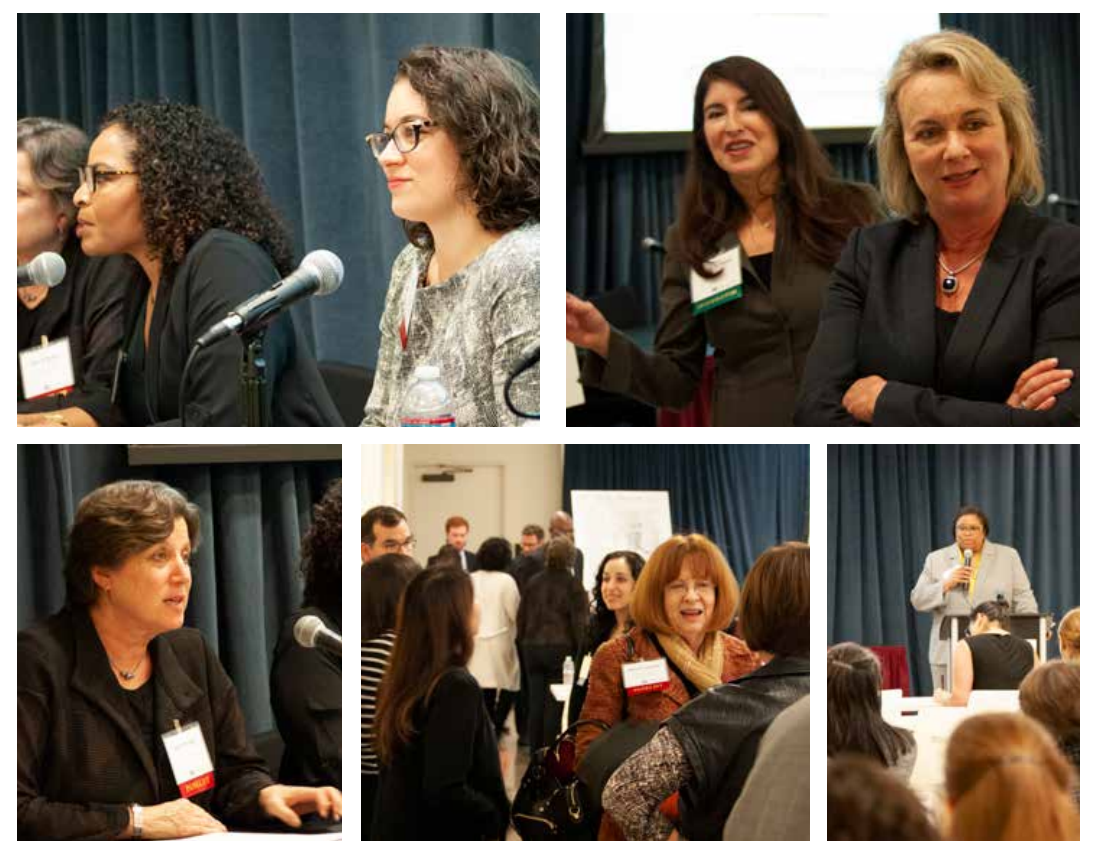
“There’s been progress,” says Shimada, “but it’s been slow.” Across the U.S., for at least the last decade, approximately 50 percent of law students have been women, but in January 2019, the National Association for Law Placement (NALP) reported that in 2018 only 23.36 percent of partners were women, and 3.19 percent of partners were women of color. San Francisco posts slightly higher percentages (27.99 percent and 5.34 percent, respectively). As the current WIN Steering Committee members began formulating their plans, they felt enough data had been collected to tell a clear and consistent story—and it was now time to do something about it. Among the questions to be addressed are, “How are women viewed and treated? Why are there biases, and how can we raise awareness? How can we engage the policy makers regarding issues like equity in pay and harassment in the workplace? How can we gather tools and information to change the culture? How can we continue to prepare women to showcase their own leadership impact?”
In late July 2018, with founding members of the original task force in attendance, the Steering Committee of the revitalized Women’s Impact Network: No Glass Ceiling 2.0 held its first official meeting to begin those discussions.
Teaming Up to Enact Change
Today’s committee, like its 1.0 predecessor and the #MeToo movement, is engendering real change. “We’ve always focused on impact, being action-oriented versus this being a women’s support group,” says Walsh. And the timing for revitalizing was right and serendipitous for many of the Steering Committee’s members.
Walsh, who is Of Counsel at Wilson Elser Moskowitz Edelman & Dicker, was wrapping up her tenure as Barristers Club President late in 2016 when Jackson approached her. The BASF leader had taken note of the charged political climate, recognized that people were looking for ways to get involved, and wanted to capitalize on the momentum. Walsh says: “The difference is this brings together all the stakeholders: men, women, and institutions. That joining of forces—in dialogue, working together—is unique and, for me, one of the main reasons BASF’s women’s initiative stood out from other organizations with similar goals.”
The Women’s Impact Network encompasses five subcommittees as working groups, each of which focuses on an impact goal. The structure was specifically designed to appeal to a diverse mix of attorneys with various interests, specialties and talents, says Walsh. “There are countless ways one can add value to the initiative—we wanted to provide a wide array of opportunities across multiple focus areas for anyone interested,” she explained.
The Policy Impact Subcommittee is working to identify issues in which BASF can take action. “Working with the women’s legislative caucus, we could draft an amicus brief, find people to testify,” says Salgado, who is VP and Associate General Counsel at AT&T. In the process, they’ll help to identify the curriculum and prepare BASF members for more leadership experience.
The Male Impact Subcommittee serves as a way to engage and address challenges, and provide thought leadership for the benefit of all genders. “We feel strongly this conversation should not happen in an echo chamber,” says Salgado. “One man who spoke at the conference said to me, ‘I didn’t really think about this till I was asked to be on the panel.’ This elevated the issue.” As we saw at the November conference (where the male panelists had an open and honest discussion about what they had done—and importantly, what they wish they had done—to advance equality in their firms), by engaging all genders, the hard and necessary conversations can begin.
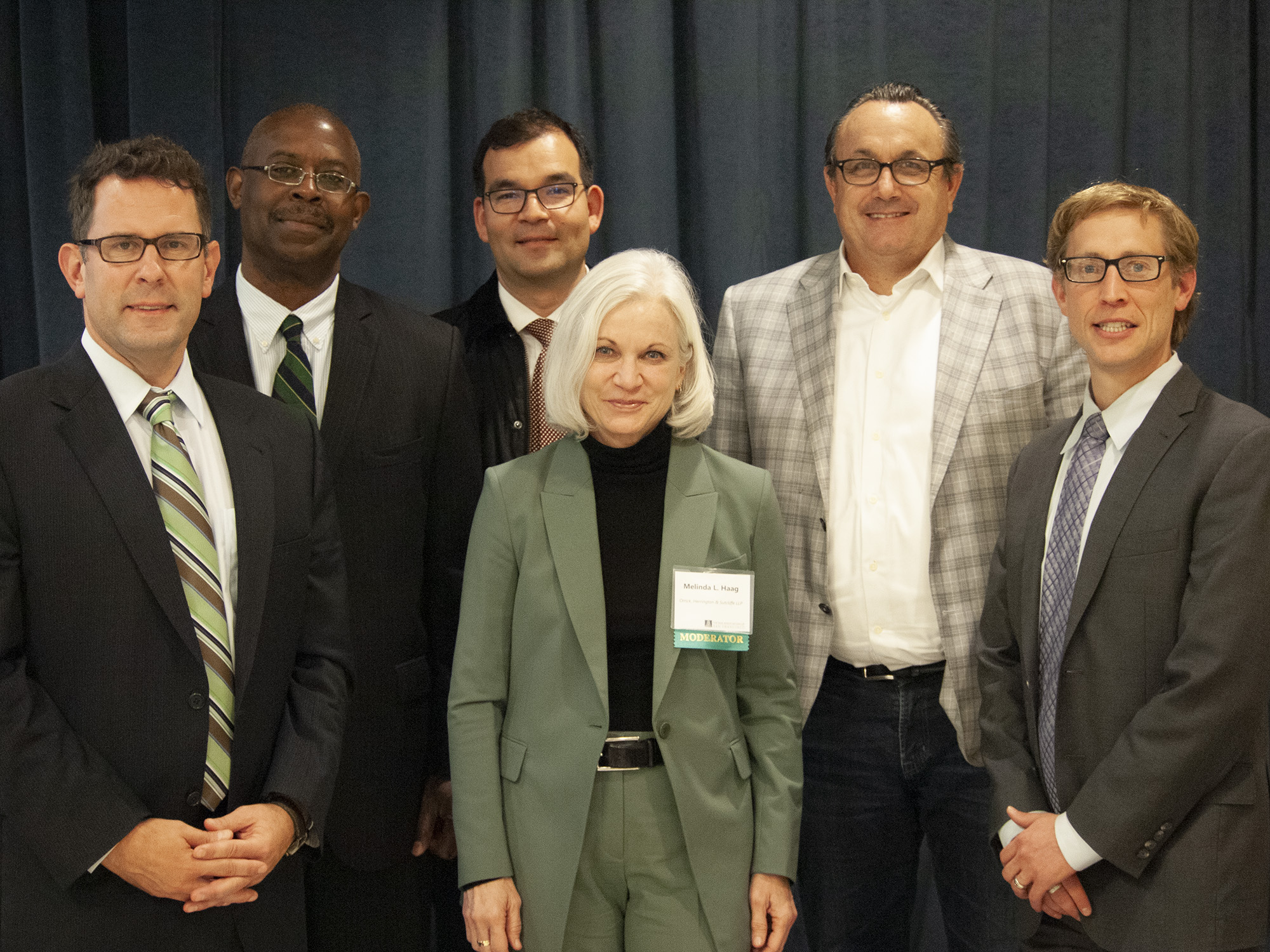
The Lawyer Lifestyle Impact Subcommittee is examining work-life balance. “That term became shorthand for ‘working parent’,” says Salgado, “but lifestyle—it’s so much more than that—it affects all of us because we all have a life outside the office that involves something other than work.” Led by Anjali Kulkarni, an associate at Duane Morris, the Communications & Special Programs Subcommittee is identifying speakers, reaching out to the community, and planning special events. It was this group that was responsible for the success of November’s inaugural conference.
Skills and leadership training remains an important facet of the plans for success. The Professional Development Impact Subcommittee will work on this, as well as potentially developing a mentorship project. “We need to get women trained in business skills, get them comfortable in processes and operations,” says Jackson. “Not many lawyers have this skill set, and it’s invaluable if you want to be looked at for promotion.” Beyond business skills, there’s a call to provide women with the personal skills to succeed in leadership. “We need to teach women to take a chance, to equip them with confidence,” says Jackson.
The passionate, committed members of the WIN team are up to the challenges; they’re in it to win it. “They’re rock stars,” says Walsh. “How I’ve loved every conversation, the surge of inspiration,” says Salgado. “We are going to get things done.”
Setting Goals, Starting Trends, and Building a Better Future
Among the ideas brainstormed for future events and projects are building resources of books, articles, actionable tools, and materials. The next conference is already scheduled for November 14, 2019. “If there’s a fit with a CLE program, we want to consider it,” Salgado says. “Regarding programs and events, there are endless opportunities to have these conversations. We want to be value-added to BASF.”
To keep on point with their efforts to be inclusive, one of the many innovations the Steering Committee has conceived is to find a diverse way of reaching people. “We can’t be a community about diversity without diverse points of entry. Programs need to be accessible,” Salgado says. “For example, events will be offered at different times. Not all events will start at 5 p.m. on weeknights.”
As brainstorms become actionable items and events, the team is also aware of how they may be setting precedence for bar associations around the country. “BASF has always been a national trendsetter,” says Walsh, noting how the original task force’s No Glass Ceiling Initiative provided a model for the rest of the country to follow. “It became an example of how local initiatives can impact national change,” she says, and Bradstreet confirms that she received calls from all over the country requesting copies of the initiative and it was implemented outside of the Bay Area.
Current leaders are committed to continuing that legacy. “It’s great to see BASF continue to be at the forefront of smashing the glass ceiling,” says Bradstreet. “We’ve come a long way, and we have more to do.”
Co-Chairs Salgado and Walsh are prepared to carry the mantle of the 1.0 task force. “The changes we’ve seen in just the past eighteen years are the result of the cultural shift they set into motion,” Walsh says. “We recognize the historic roots and the legacy. We feel a huge sense of responsibility,” she says, “and we take it very seriously. To be part of that is a tremendous honor.”
This is the attitude that will help them make history. This is how they—and all of us—will win.
About the author:
Kathleen Guthrie Woods is a San Francisco–based freelance writer and a regular contributor to San Francisco Attorney. Previous articles include “Understanding the Crisis in Our Immigration Courts” (Spring 2015) and “Let’s Lose the Booze: Rethinking Networking Events” (Summer 2018).


